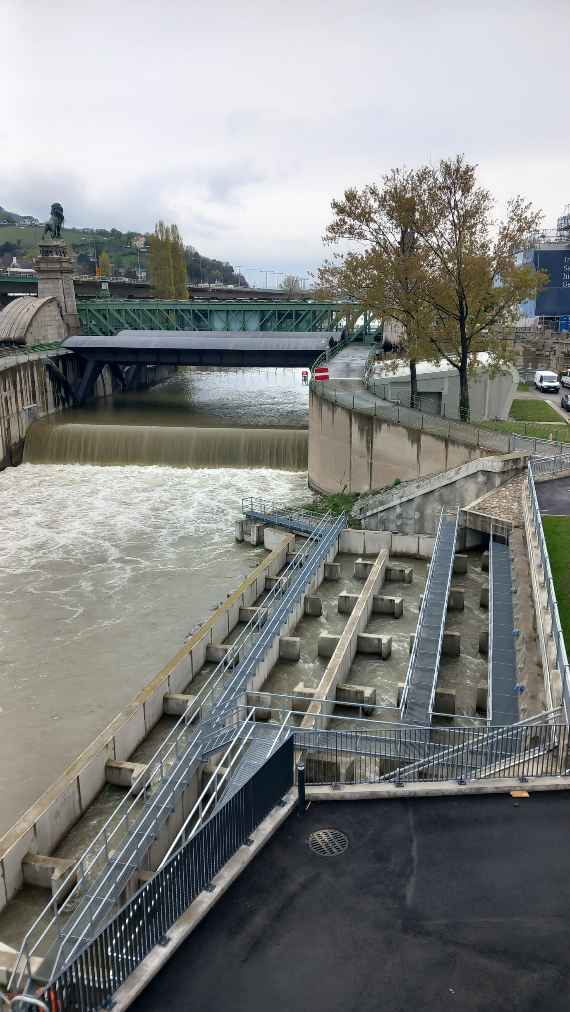At the first excursion station, the school class with a STEM focus (Science, Technology, Engineering and Mathematics) learned basic facts about a natural course of a river, about human impacts in natural waters, as well as possibilities to restore fish passages in rivers and streams. The Danube and the Danube Canal in the area of Brigittenauer Sporn offer examples of human influences (river training, barrages ...) and can be observed directly from the laboratory.
In another excursion station, knowledge about sediment transport in a water body could be gained with the help of two small morphological flumes. In a morphological flume, it is possible to observe and influence the natural course of a flowing water in a playful way. Of course, also ecologically unfavourable situations can be reconstructed and analysed.
The two morphological flumes of the Institute of Hydraulic Engineering have already been used at other events to demonstrate sediment transport in a watercourse to young and older people interested in research.
View to the Nussdorf lock structure from the new hydraulic engineering laboratory
View from the new hydraulic engineering laboratory to the overflowed Nussdorf weir and the fish ladder between Danube Canal and Danube. In the background, the Schemerl Bridge, which has marked the entrance to the Danube Canal since 1899, can be seen.
-
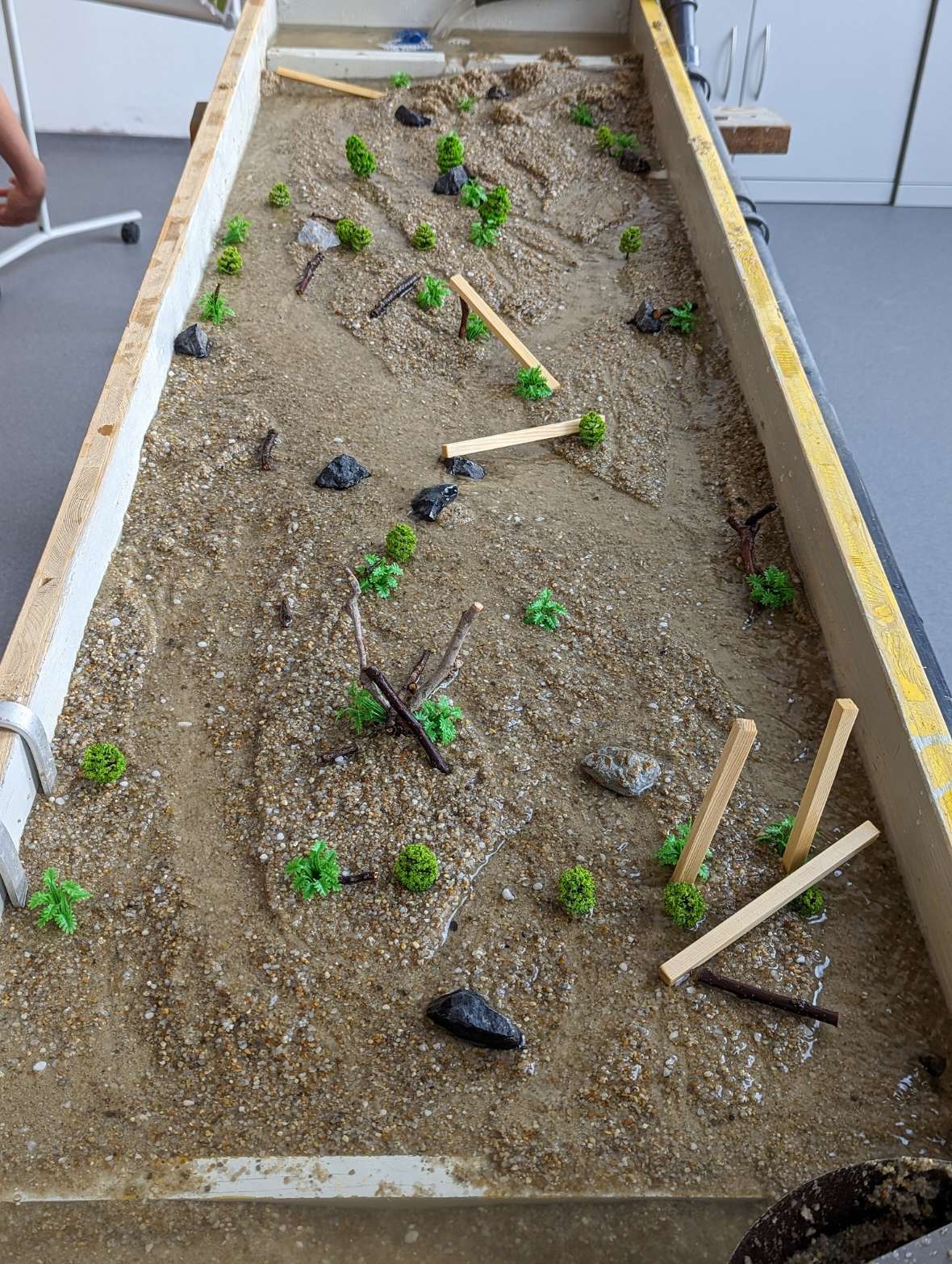
© Kainz (BAW-IWB) zoom gallery -
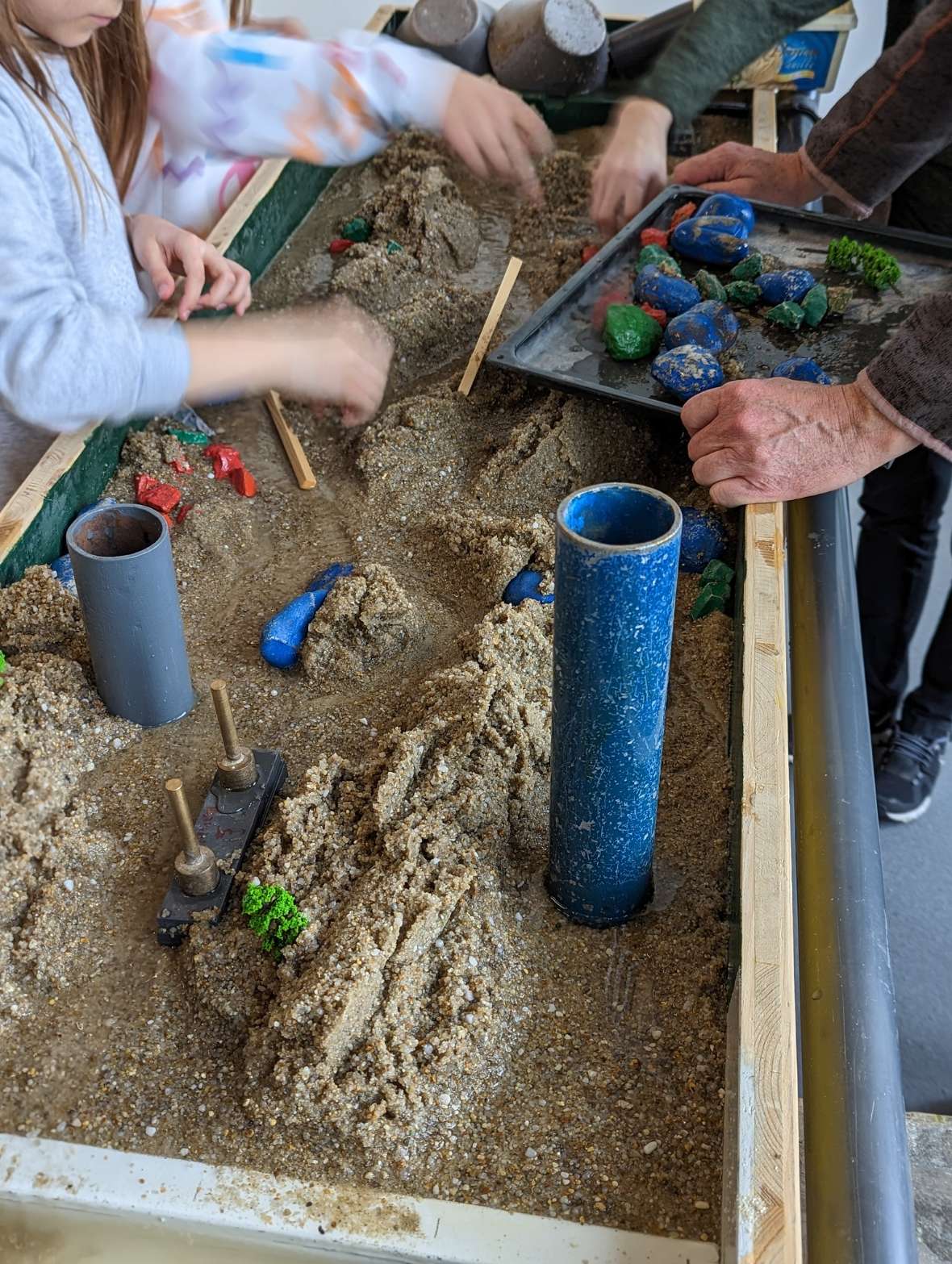
© Kainz (BAW-IWB) zoom gallery -
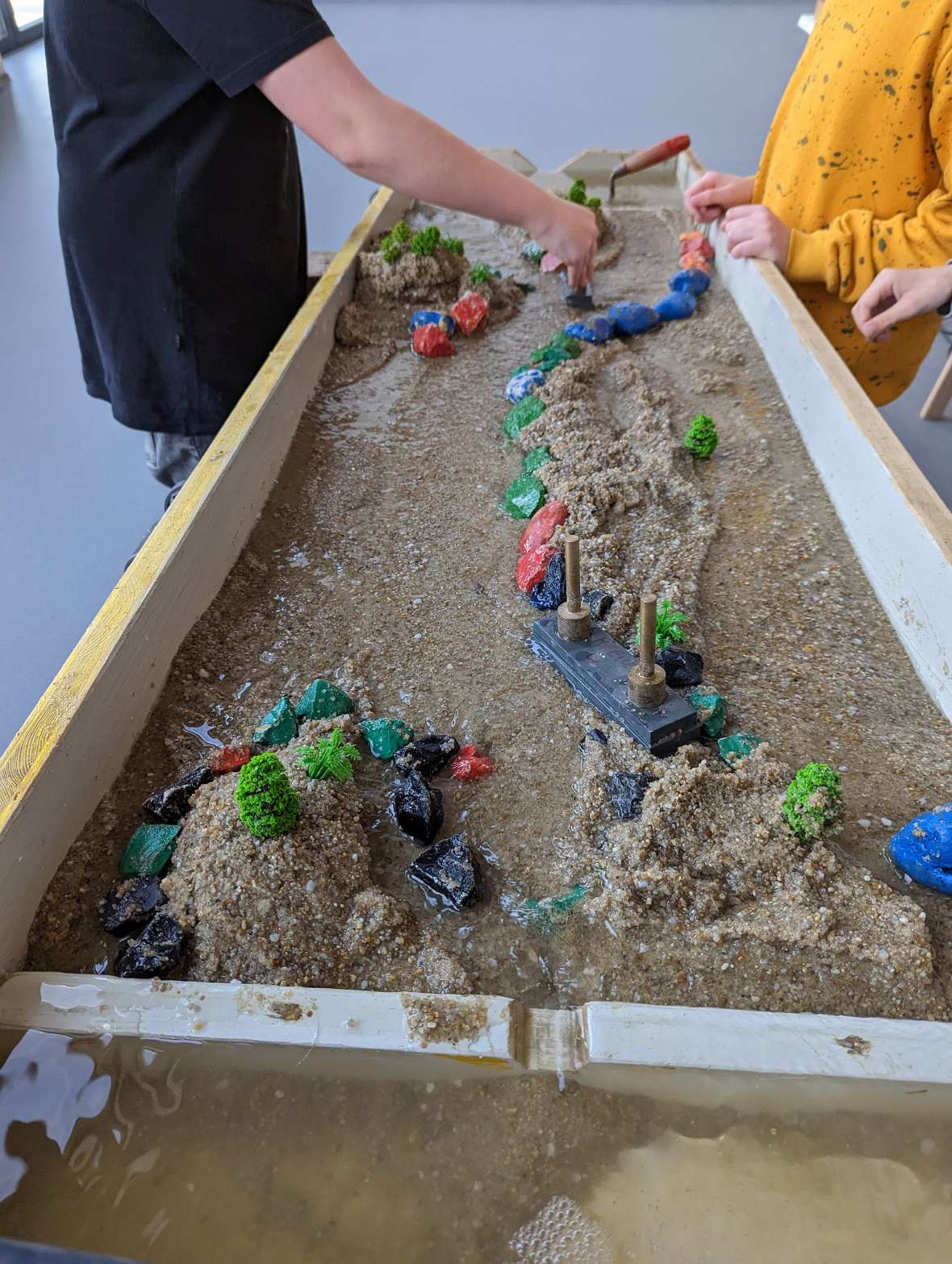
© Kainz (BAW-IWB) zoom gallery -
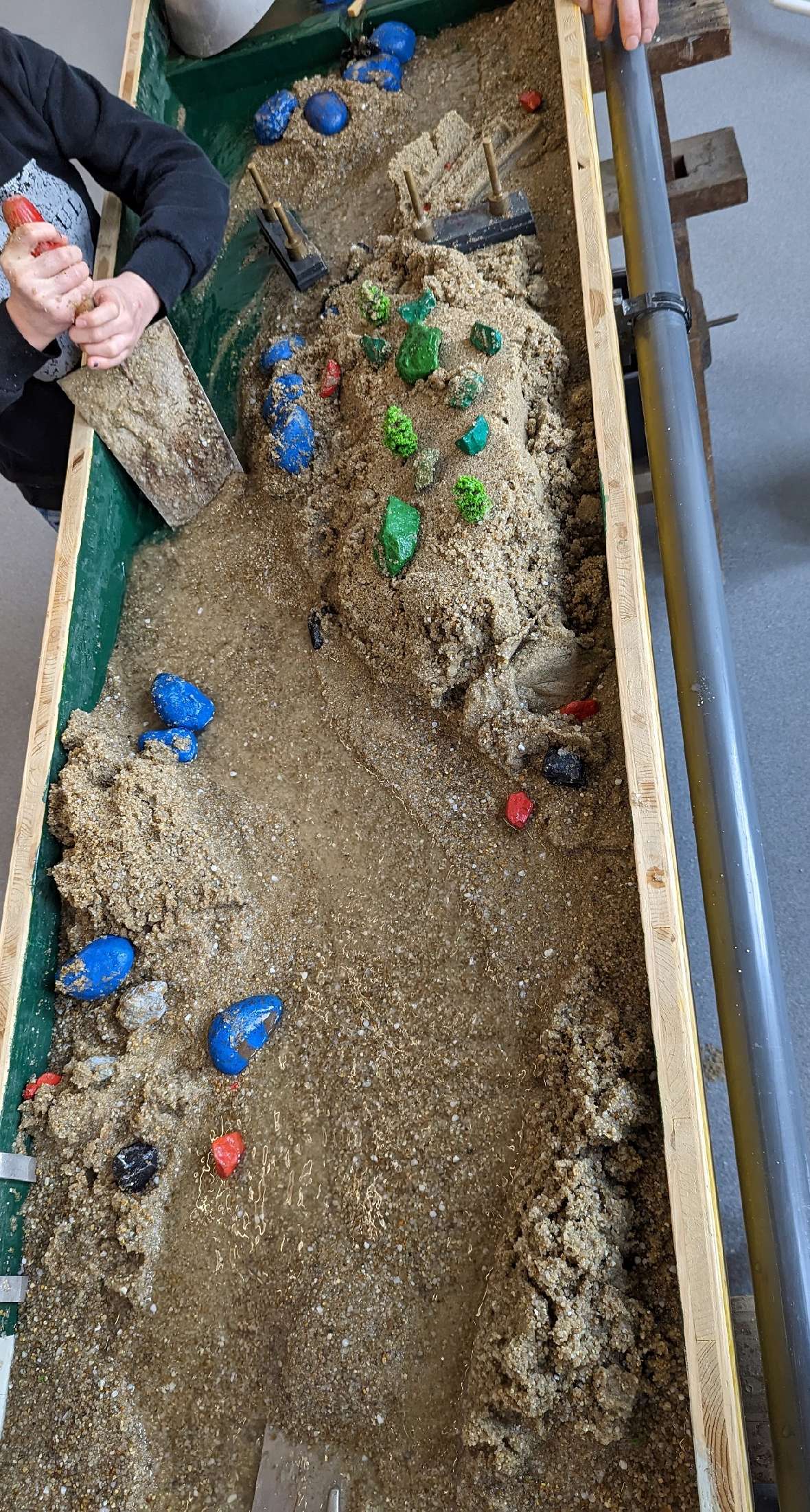
© Kainz (BAW-IWB) zoom gallery -
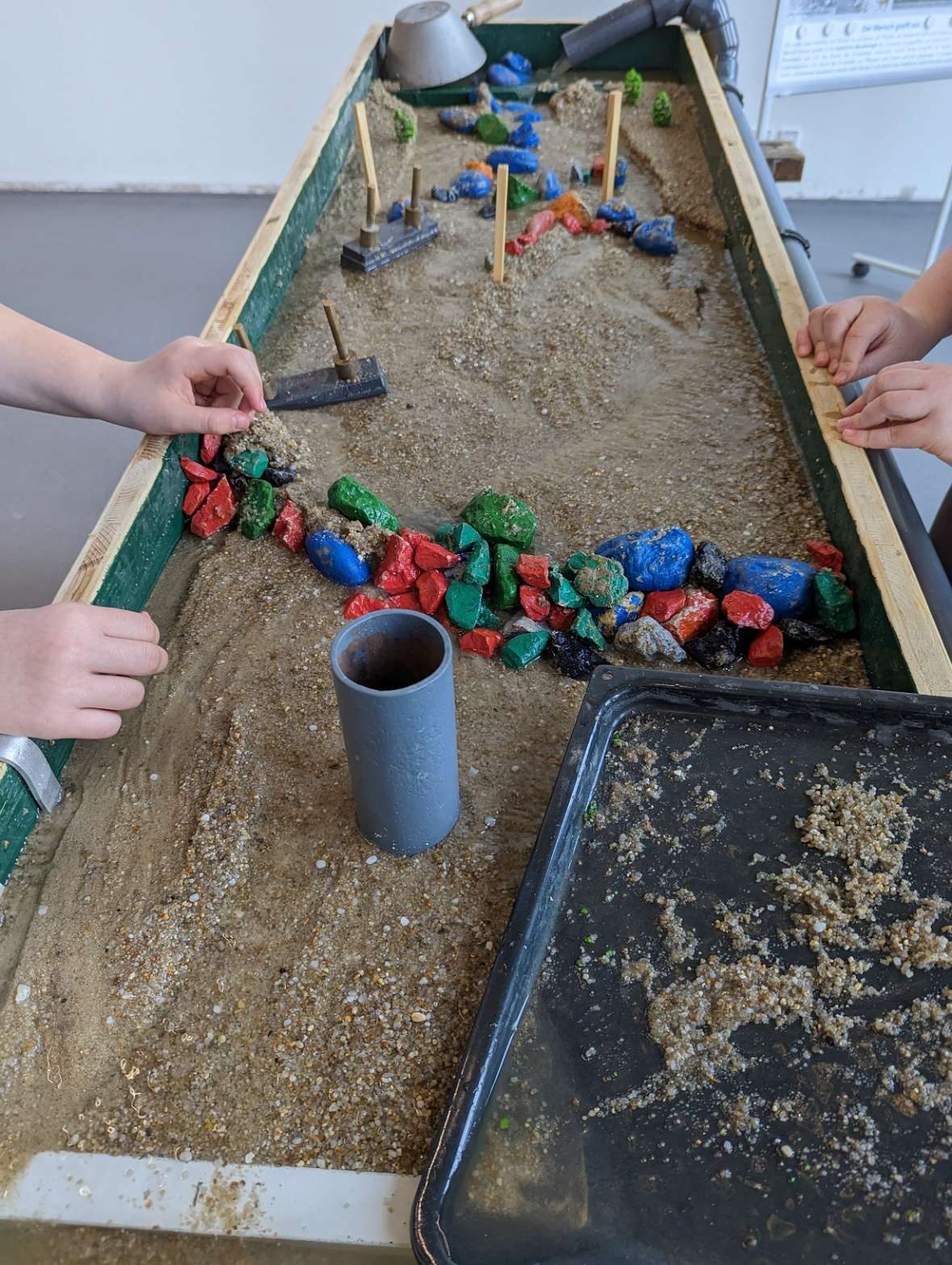
© Kainz (BAW-IWB) zoom gallery -

© Kainz (BAW-IWB) zoom gallery
The morphological flumes of the Institute of Hydraulic Engineering: In small groups of two to three students, the course of the flumes could be shaped and influenced in different ways.


